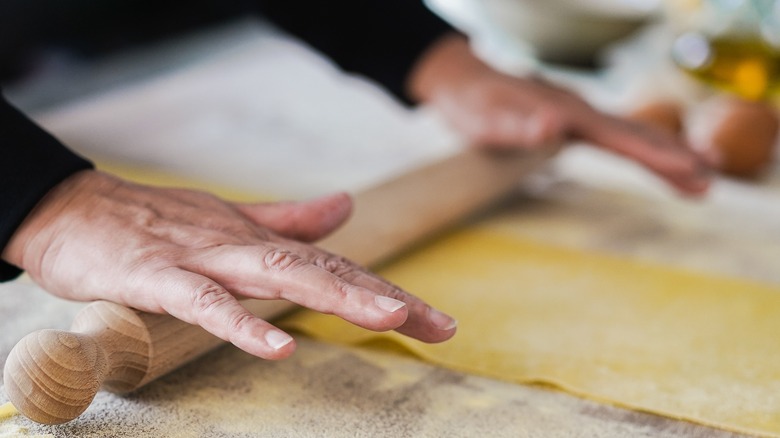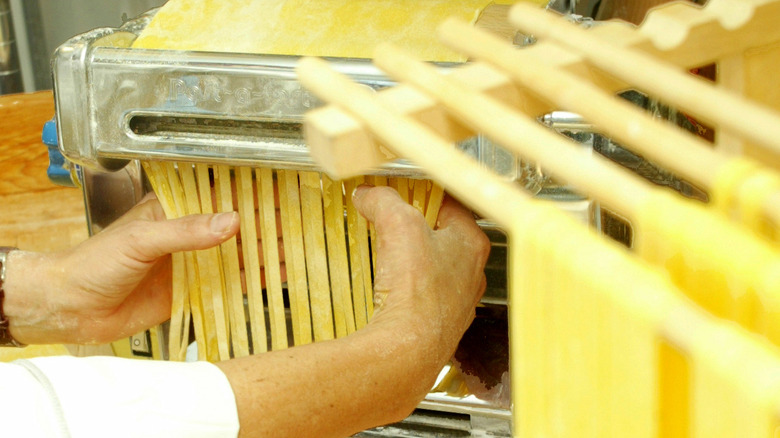What To Do If Your Homemade Pasta Dough Is Too Soft
Making pasta sheets at home is a labor of love. However, it can be disheartening when you've kneaded the dough, chilled it, and rolled it to find that the final texture is way off base. If your pasta dough is too soft to cut into the perfect fresh pappardelle, all is not lost — simply semi-dry your pasta sheets to eliminate the extra stickiness on the top surface and create flawless noodles that are beautifully separate and distinct.
Even the most experienced pasta maker, who's used the same tried and tested recipe over the years, will deal with a pasta dough that's too soft sometimes. This is because the texture of pasta dough depends not only on the ingredients and its maker but also on the environment where it's been prepared. For example, humid conditions can make pasta dough stickier to the touch, and colder weather can elicit a drier result. Remaking an entire batch of pasta from scratch wastes both time and ingredients, so finding a simple fix to an overly soft dough is super helpful. And putting your pasta drying rack to use a little earlier than planned is the solution. Instead of placing your cut noodles on your stand to dry completely at the very end of your pasta-making session, you're going to hang the pasta in sheets, prior to cutting them, so they can partially dry. The surface of the sheets will become slightly wizened and leathery to the touch but not dry in the center.
How to semi-dry soft pasta dough
Lay your pasta sheets on your drying rack to allow the air to circulate around them and remove some of the excess moisture in the dough. The back of a chair also works brilliantly as a makeshift pasta dryer because the air can still move freely around the sheets. A coat hanger or clothes airer are other useful alternatives. Depending on the thickness of the sheets and the stickiness of the dough, you may need to allow your pasta to dry for up to 15 minutes. However, for thinner sheets, five minutes may be sufficient. Simply touch the pasta with your fingertips to assess its texture and give it more time to dry if required. The pasta should still be workable and soft enough to be cut into strands or rolled into shapes but have that leathery feel on the surface.
Once your sheets are semi-dry, dust them with flour to achieve a cleaner cut as they go through your pasta machine. This little tip counteracts any oil or moisture left on the cutters from a previous session of pasta making, resulting in neater noodles. Finally, catch your linguine, spaghetti, tagliatelle, or fettuccine as it passes through the machine to help each strand remain distinct.

